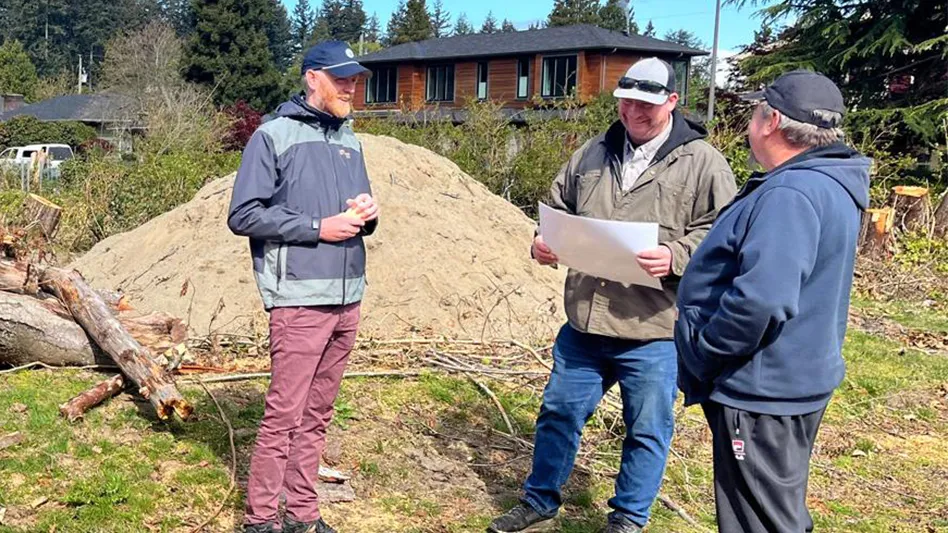
Advanced mechanics are helping reduce mechanical stress on a Western Pennsylvania club’s greens.
John Shaw, the superintendent at Valley Brook Country Club, implemented an entire fleet of RG3 greens mowers this season at the 27-hole facility in suburban Pittsburgh. The mowers are sold by Cub Cadet, feature Precise Path Technology and can function without an operator.
Yes, Shaw relies on robots to maintain the most importance piece of an upscale private course. “I have always been an outside the box type of guy,” he says.
Still, not even one of the industry’s most forward-thinking turf managers always envisioned mowing greens with robots. Had somebody mentioned the possibility of using robots to mow greens when Shaw arrived at Valley Brook in 2003, he might have offered a whimsical response. “I would have thought that couldn’t have happened and that would be just an impossible thing,” he says.
His route to exploring robotics started five years ago when he first learned of the Precise Path Technology. As member expectations for greens continued to soar, Shaw started considering using the new technology on the surfaces. Cub Cadet announced it had acquired the Precise Path Technology earlier this year, but Shaw spent 2014 using two robotic mowers on nine holes and the putting green.
One of his original goals involved reducing or eliminating turf stress created through rolling, a necessary process to provide the surfaces members demanded. Shaw collected data twice a day, comparing the nine holes (the gold nine) mowed by the robots to the 18 holes (red and blue nines) maintained by double-cutting and rolling. The robots mow and roll in the same action, and the greens on the gold nine were running six inches faster than those on the other two nines, according to Shaw.
Selling full-course use of robots to the membership ranks among the biggest challenges of Shaw’s career, especially considering only one other course, the Bayou Club in Largo, Fla., was using the technology. Shaw admits the concept led to initial “pushback” from members and some of his employees “seemed a little bit nervous” about learning the technology involved. Shaw was risking his own standing with members by lobbying for the club to purchase six robotic mowers, but he says the improved putting surfaces he observed last season were worth the risk.
The mowers are electric. Wiring rests below each green and four beacons placed above the surface allow the robots to communicate via light and sound waves. The mowers are programmed by Shaw, meaning the employee only has three options once reaching a green: pushing cancel, yes or no. “There is a misnomer out there that it’s using GPS,” Shaw says. “It is not. It’s 100 percent using sound waves and light waves. It’s doing simple math. It’s doing measurements between the beacons and the RG3.”
The RG3 is programmed to mow in seven directions, a different one for each day of the week, and Shaw says the mowers are allowing Valley Brook to create dramatic stripping without sacrificing ball speed. Six employees operate the mowers on a typical morning. An employee places the beacons into designated slots, removes the flagstick and starts the mower upon reaching a green, and repairs ballmarks and rakes bunker edges as the robot mows. Shaw considers loading the 700-pound mower onto the trailer the most complicated part of the process for an employee to learn.
Before this year, it took 10 employees to maintain greens each morning, with seven double-cutting turf and three more rolling surfaces and changing cups. “That doesn’t mean I have taken four guys away,” Shaw says. “I have taken two guys away and now I have two guys in those morning hours to do something else. I have saved money in labor, but I’m doing a better job because I now have more labor in the morning hours when I really need it.”
Valley Brook’s greens average 4,500 square feet, and it takes 25-30 minutes to complete each hole with a robot. Play has caught the robots just once this season and technical glitches have been minor, according to Shaw.
“I see it for anybody who has interest in technology,” he says. “Certainly it hasn’t been full-proof. We have had issues throughout the year, where a wire goes bad here or there. It might drive some guys crazy, but it doesn’t drive me crazy. It’s just a new challenge. I’m fine with it, where some guys might not be fine with minor problems here or there. But it’s a learning curve as far as problems go. In a nutshell, I’m very, very satisfied with it and plan on continuing to go through with it.”
FOR MORE: John Shaw joins Superintendent Radio Network to discuss the robotic greens mowers.
Guy Cipriano is GCI’s assistant editor.





